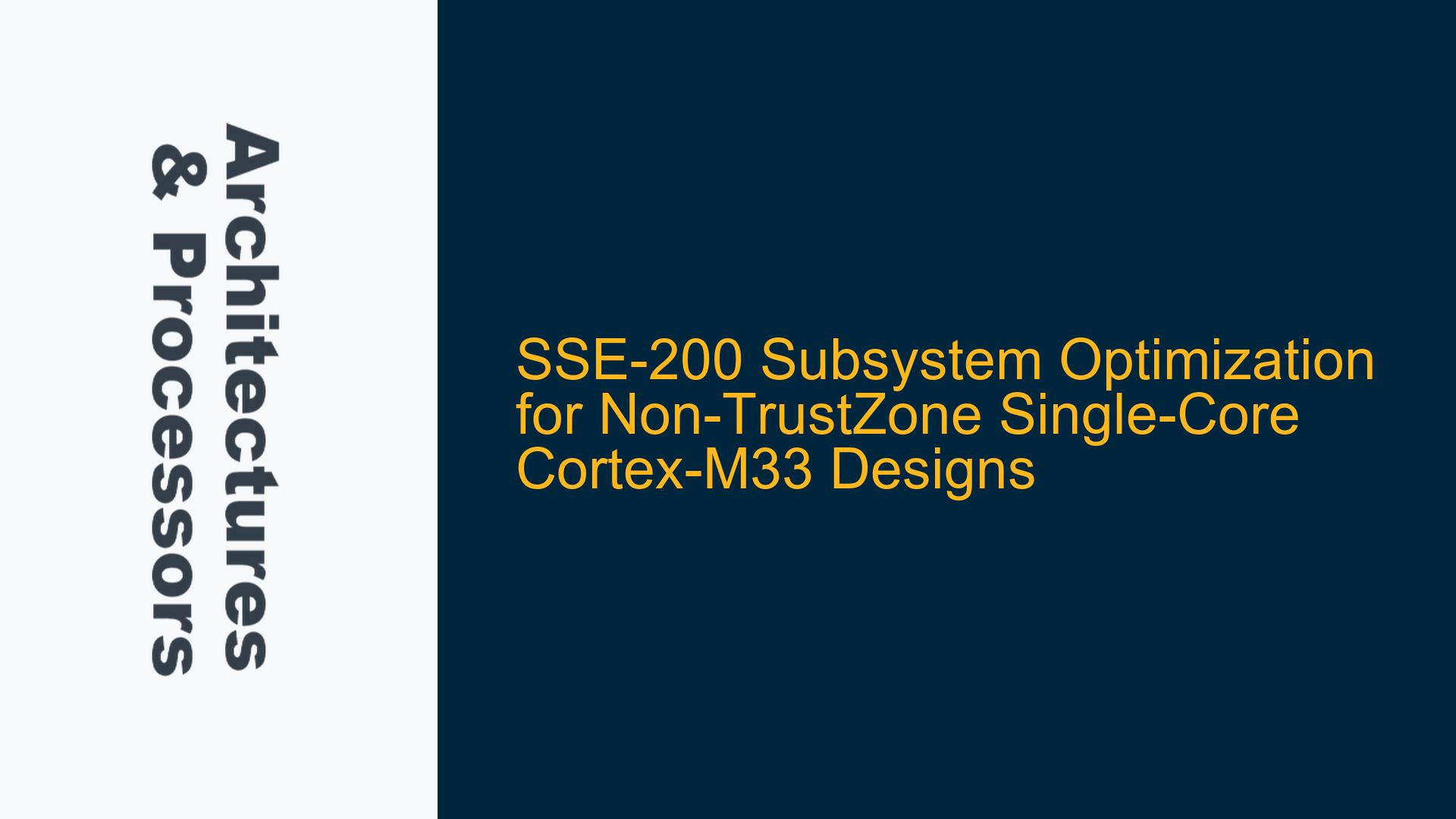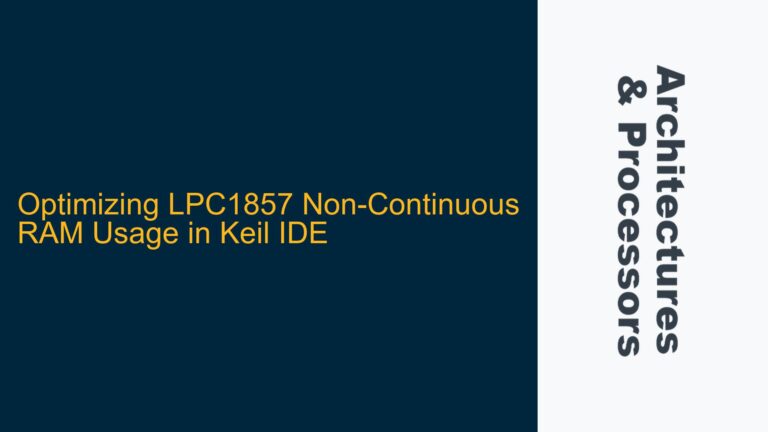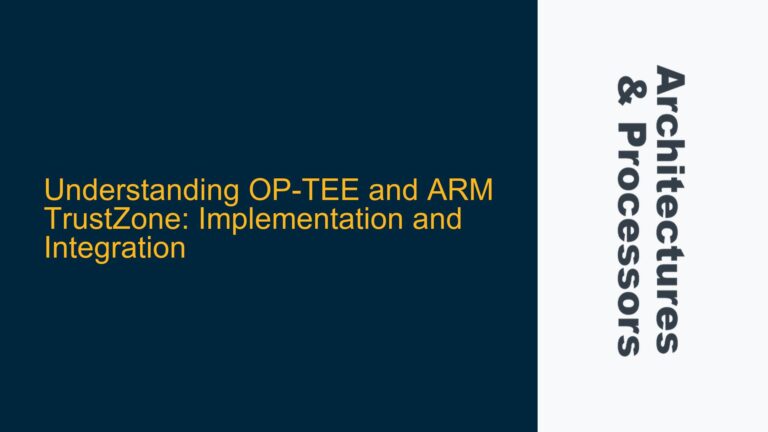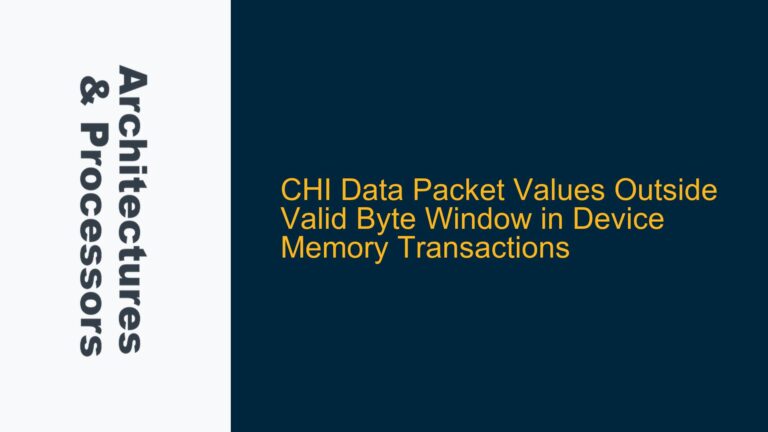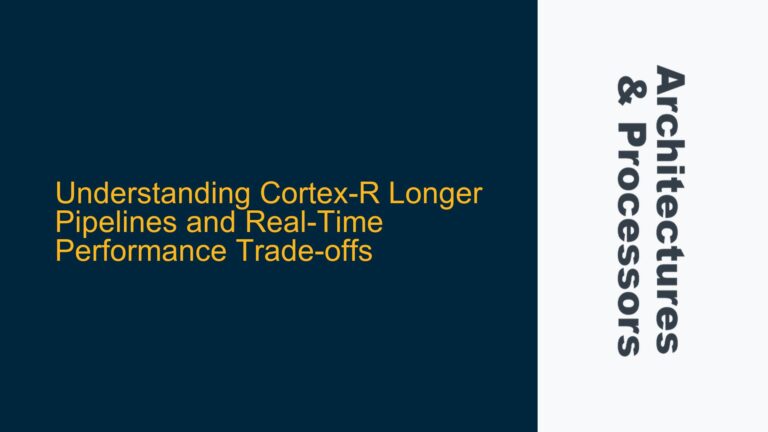ARM Cortex-M33 Single-Core MCU Design Without TrustZone
When designing a single-core Cortex-M33-based MCU without TrustZone, the SSE-200 subsystem serves as a foundational reference. The SSE-200 subsystem, originally designed for dual-core Cortex-M33 processors with TrustZone, includes several components such as the Memory Protection Controller (MPC), Access Control Gateway (ACG), External AHB Master (EAM), and SRAM controller. These components are interconnected via the AHB5 multi-layer bus fabric. The primary challenge lies in determining which components can be safely removed or modified to optimize the design for a single-core, non-TrustZone implementation while maintaining system integrity and performance.
The SSE-200 subsystem is highly modular, allowing for customization based on specific design requirements. However, removing components like the MPC and ACG, which are integral to TrustZone functionality, requires a thorough understanding of their roles and the potential impact on the system. Additionally, the necessity of the EAM in a single-core system with DMA must be evaluated to ensure efficient data transfer and system performance.
Memory Protection Controller (MPC) and Access Control Gateway (ACG) Removal Feasibility
The Memory Protection Controller (MPC) and Access Control Gateway (ACG) are critical components in a TrustZone-enabled system. The MPC enforces memory access permissions based on the security state of the processor, while the ACG manages access control between secure and non-secure domains. In a non-TrustZone system, these components may seem redundant, but their removal must be carefully considered to avoid unintended consequences.
The MPC ensures that memory accesses comply with the security policies defined by the system. In a TrustZone system, the MPC prevents non-secure accesses to secure memory regions. Without TrustZone, the MPC’s role is diminished, but it may still provide benefits such as memory region protection and access control within a single security domain. Removing the MPC could simplify the design but may also eliminate these protective features, potentially leading to unauthorized memory accesses or system instability.
The ACG, on the other hand, manages access control between secure and non-secure domains. In a non-TrustZone system, the ACG’s primary function is irrelevant. However, the ACG may also handle other access control tasks, such as managing access to peripherals or shared resources. Removing the ACG could simplify the bus fabric but may require additional logic to handle access control for peripherals and shared resources.
In summary, while the MPC and ACG are not strictly necessary in a non-TrustZone system, their removal should be approached with caution. The potential benefits of simplifying the design must be weighed against the loss of memory protection and access control features. A thorough analysis of the system’s requirements and potential risks is essential before making a decision.
External AHB Master (EAM) Necessity in Single-Core Systems with DMA
The External AHB Master (EAM) is a component that allows external masters to access the AHB bus fabric. In a single-core system with DMA, the necessity of the EAM depends on the system’s architecture and the DMA’s role in data transfer. The EAM facilitates communication between external masters and the AHB bus, enabling efficient data transfer and system integration.
In a single-core system, the DMA controller typically handles data transfer between peripherals and memory, reducing the CPU’s workload. The DMA controller acts as a bus master, initiating data transfers on the AHB bus. If the DMA controller is the only bus master besides the CPU, the EAM may not be necessary. However, if there are other external masters that need to access the AHB bus, the EAM becomes essential for managing bus access and ensuring efficient data transfer.
The EAM also plays a role in managing bus arbitration and prioritizing access requests. In a system with multiple bus masters, the EAM ensures that access requests are handled efficiently, preventing bus contention and ensuring optimal system performance. Without the EAM, bus arbitration and access prioritization would need to be handled by other components, potentially complicating the design and impacting performance.
In conclusion, the necessity of the EAM in a single-core system with DMA depends on the presence of other external masters and the system’s bus arbitration requirements. If the DMA controller is the only bus master besides the CPU, the EAM may not be necessary. However, if there are other external masters, the EAM is essential for managing bus access and ensuring efficient data transfer.
Implementing a Simplified AHB5 Bus Fabric Without MPC and ACG
Removing the MPC and ACG from the SSE-200 subsystem requires a careful redesign of the AHB5 bus fabric to ensure system integrity and performance. The AHB5 bus fabric is a multi-layer interconnect that facilitates communication between masters and slaves in the system. Without the MPC and ACG, the bus fabric must be simplified while maintaining efficient data transfer and access control.
The first step in redesigning the AHB5 bus fabric is to analyze the system’s memory map and access requirements. The memory map defines the address ranges for different memory regions and peripherals, while access requirements specify the permissions for each region. Without the MPC, memory protection must be handled by other means, such as using the MPU (Memory Protection Unit) in the Cortex-M33 processor. The MPU can enforce memory access permissions based on the processor’s operating mode, providing a level of protection similar to the MPC.
Next, the bus arbitration logic must be redesigned to handle access requests from multiple masters. In the original SSE-200 subsystem, the ACG manages access control between secure and non-secure domains. Without the ACG, the bus arbitration logic must be simplified to handle access requests from a single security domain. This can be achieved by implementing a centralized arbitration scheme that prioritizes access requests based on predefined criteria, such as master priority or request type.
Finally, the bus fabric must be optimized for performance and area. Removing the MPC and ACG reduces the complexity of the bus fabric, but it also eliminates some of the features that contribute to system performance. To compensate for this, the bus fabric can be optimized by reducing the number of layers, simplifying the arbitration logic, and minimizing the latency of data transfers. This can be achieved through careful design and simulation, ensuring that the simplified bus fabric meets the system’s performance requirements.
In summary, implementing a simplified AHB5 bus fabric without the MPC and ACG requires a thorough analysis of the system’s memory map and access requirements, redesigning the bus arbitration logic, and optimizing the bus fabric for performance and area. By carefully addressing these challenges, it is possible to create a simplified and efficient bus fabric that meets the needs of a single-core, non-TrustZone system.
Ensuring System Integrity and Performance Without MPC and ACG
Removing the MPC and ACG from the SSE-200 subsystem has implications for system integrity and performance. The MPC and ACG provide critical features such as memory protection and access control, which contribute to system security and stability. Without these components, alternative measures must be implemented to ensure system integrity and performance.
One approach to ensuring system integrity is to leverage the Memory Protection Unit (MPU) in the Cortex-M33 processor. The MPU can enforce memory access permissions based on the processor’s operating mode, providing a level of protection similar to the MPC. By configuring the MPU to define memory regions and access permissions, it is possible to prevent unauthorized memory accesses and protect critical system resources.
Another approach is to implement software-based access control mechanisms. These mechanisms can be implemented in the firmware or operating system, enforcing access control policies based on the system’s requirements. While software-based access control is less efficient than hardware-based solutions, it provides flexibility and can be tailored to the specific needs of the system.
In terms of performance, removing the MPC and ACG reduces the complexity of the bus fabric, potentially improving data transfer latency and reducing area. However, the loss of features such as memory protection and access control may impact system performance in other ways. For example, without the MPC, memory accesses may need to be validated by the MPU, introducing additional latency. Similarly, without the ACG, bus arbitration may need to be handled by other components, potentially increasing contention and reducing throughput.
To mitigate these performance impacts, the system can be optimized by reducing the number of bus layers, simplifying the arbitration logic, and minimizing the latency of data transfers. Additionally, the system can be designed to prioritize critical tasks and allocate resources efficiently, ensuring that performance requirements are met.
In conclusion, ensuring system integrity and performance without the MPC and ACG requires a combination of hardware and software-based solutions. By leveraging the MPU in the Cortex-M33 processor and implementing software-based access control mechanisms, it is possible to maintain system security and stability. Additionally, optimizing the bus fabric and system design can help mitigate performance impacts, ensuring that the system meets its performance requirements.
Evaluating the Role of the External AHB Master (EAM) in Single-Core Systems
The External AHB Master (EAM) plays a critical role in systems with multiple bus masters, facilitating communication between external masters and the AHB bus. In a single-core system with DMA, the necessity of the EAM depends on the system’s architecture and the DMA’s role in data transfer. Evaluating the role of the EAM involves analyzing the system’s bus arbitration requirements and the presence of other external masters.
In a single-core system, the DMA controller typically handles data transfer between peripherals and memory, reducing the CPU’s workload. The DMA controller acts as a bus master, initiating data transfers on the AHB bus. If the DMA controller is the only bus master besides the CPU, the EAM may not be necessary. However, if there are other external masters that need to access the AHB bus, the EAM becomes essential for managing bus access and ensuring efficient data transfer.
The EAM also plays a role in managing bus arbitration and prioritizing access requests. In a system with multiple bus masters, the EAM ensures that access requests are handled efficiently, preventing bus contention and ensuring optimal system performance. Without the EAM, bus arbitration and access prioritization would need to be handled by other components, potentially complicating the design and impacting performance.
To evaluate the necessity of the EAM, the system’s architecture must be analyzed to identify all potential bus masters. If the DMA controller is the only bus master besides the CPU, the EAM may not be necessary, and the bus arbitration logic can be simplified. However, if there are other external masters, such as additional DMA controllers or external processors, the EAM is essential for managing bus access and ensuring efficient data transfer.
In summary, evaluating the role of the EAM in a single-core system with DMA involves analyzing the system’s bus arbitration requirements and the presence of other external masters. If the DMA controller is the only bus master besides the CPU, the EAM may not be necessary. However, if there are other external masters, the EAM is essential for managing bus access and ensuring efficient data transfer.
Optimizing the AHB5 Bus Fabric for Single-Core Systems
Optimizing the AHB5 bus fabric for a single-core system involves simplifying the bus architecture, reducing latency, and minimizing area. The AHB5 bus fabric is a multi-layer interconnect that facilitates communication between masters and slaves in the system. In a single-core system, the bus fabric can be optimized by reducing the number of layers, simplifying the arbitration logic, and minimizing the latency of data transfers.
The first step in optimizing the AHB5 bus fabric is to analyze the system’s communication requirements. In a single-core system, the CPU and DMA controller are the primary bus masters, and the number of slaves is typically limited. By reducing the number of bus layers, the complexity of the bus fabric can be minimized, reducing area and improving performance. For example, a single-layer bus fabric may be sufficient for a single-core system with a limited number of slaves.
Next, the bus arbitration logic must be simplified to handle access requests from the CPU and DMA controller. In a single-core system, the arbitration logic can be designed to prioritize access requests based on predefined criteria, such as master priority or request type. By simplifying the arbitration logic, the latency of data transfers can be minimized, improving system performance.
Finally, the bus fabric must be optimized for area and power consumption. Reducing the number of bus layers and simplifying the arbitration logic can help minimize area and power consumption. Additionally, the bus fabric can be designed to support low-power modes, reducing power consumption during idle periods.
In conclusion, optimizing the AHB5 bus fabric for a single-core system involves simplifying the bus architecture, reducing latency, and minimizing area. By carefully analyzing the system’s communication requirements, simplifying the arbitration logic, and optimizing the bus fabric for area and power consumption, it is possible to create an efficient and high-performance bus fabric that meets the needs of a single-core system.
Conclusion
Designing a single-core Cortex-M33-based MCU without TrustZone requires careful consideration of the SSE-200 subsystem’s components and their roles in the system. The Memory Protection Controller (MPC) and Access Control Gateway (ACG) are not strictly necessary in a non-TrustZone system, but their removal must be approached with caution to ensure system integrity and performance. The External AHB Master (EAM) may not be necessary in a single-core system with DMA, but its role must be evaluated based on the system’s architecture and bus arbitration requirements.
Optimizing the AHB5 bus fabric for a single-core system involves simplifying the bus architecture, reducing latency, and minimizing area. By carefully analyzing the system’s communication requirements, simplifying the arbitration logic, and optimizing the bus fabric for area and power consumption, it is possible to create an efficient and high-performance bus fabric that meets the needs of a single-core system.
In summary, designing a single-core Cortex-M33-based MCU without TrustZone requires a thorough understanding of the SSE-200 subsystem’s components and their roles in the system. By carefully evaluating the necessity of the MPC, ACG, and EAM, and optimizing the AHB5 bus fabric, it is possible to create a simplified and efficient design that meets the system’s requirements.
